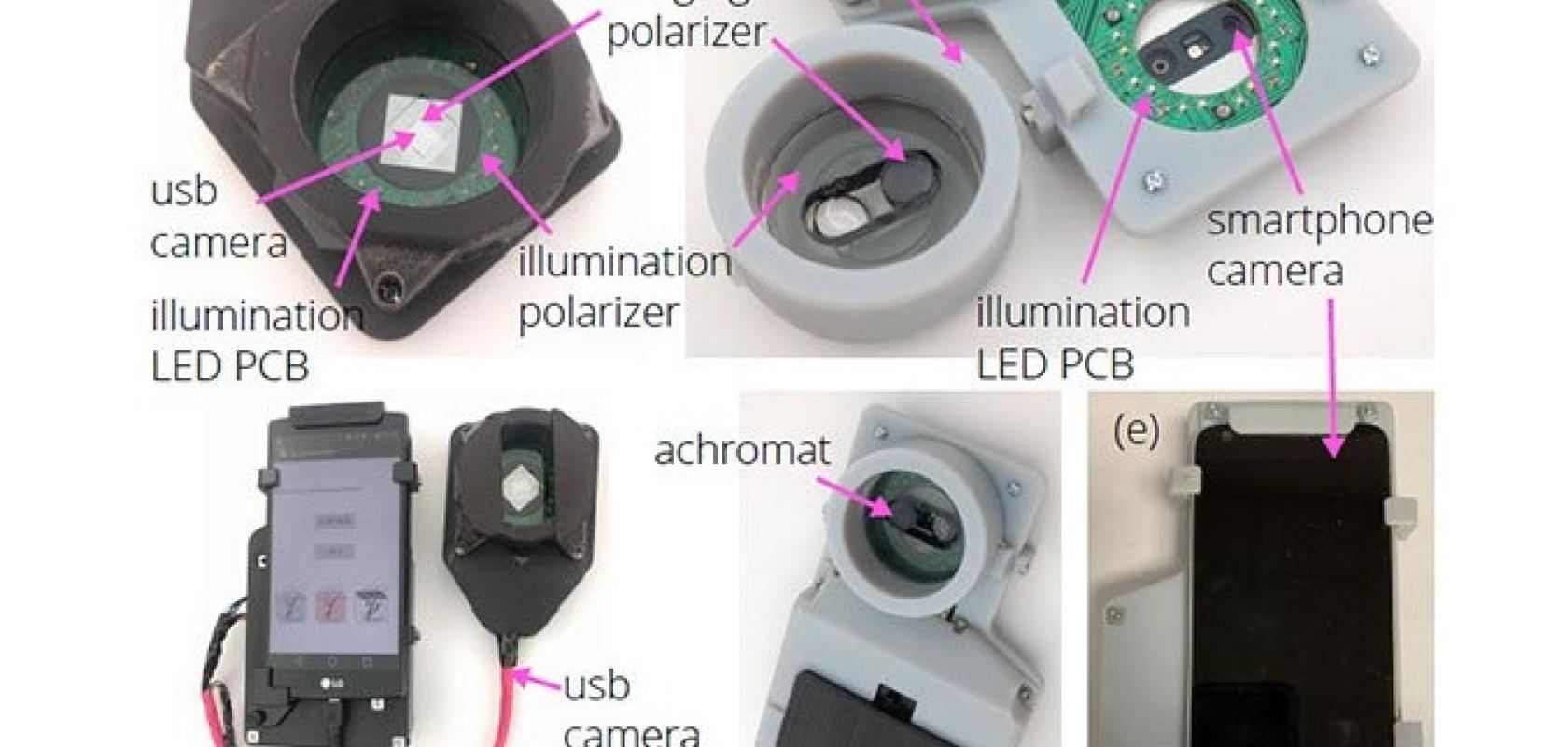Researchers in the US have demonstrated how standard smartphone technology can be adapted to image skin lesions, providing a low-cost, accessible medical diagnostic tool for skin cancer.
The smartphone-based dermascope has been published in the Journal of Biomedical Optics (JBO).
Skin lesions are diagnosed by a simple system of colour, size, asymmetry, and surface appearance: the way in which the lesions are lit indicates differences between normal and malignant lesions.
For their study, the authors developed two dermascopes using a smartphone-based camera and a USB-based camera. Both dermascopes, integrating LED-based polarised white-light imaging (PWLI), polarised multispectral imaging (PMSI) and image-processing algorithms, successfully mapped and delineated between the dermal chromophores indicative of melanoma, and the general skin redness known as erythema.
According to Brian Pogue, JBO editor-in-chief, SPIE fellow, and MacLean Professor of Engineering at Dartmouth College, leveraging a smartphone camera to image skin lesions improves both the efficiency and efficacy of skin-lesion diagnostics. 'The functionality and performance for the detection of skin cancers is very important,' he said. 'The cellphone camera approaches proposed and tested in this paper introduce key steps in a design that will provide simple, accurate diagnoses.
'While there are always ways to make medical imaging systems work, they can often be too expensive to be a viable commercial success,' Pogue continued. 'Similarly, devices can be made so complex that they aren't readily adopted. Here, the already-familiar platform is both low cost and intuitive to use. The simplicity of the approach here successfully combines the need for simple diagnostic tools with high precision. This is the kind of innovation that will potentially allow for easier adoption in clinical use.'
The article authors are Ross Uthoff, Bofan Song, and Rongguang Liang of James C. Wyant College of Optical Sciences, The University of Arizona, and Melody Maarouf and Vivian Shi of the College of Medicine, Department of Medicine, Division of Dermatology, The University of Arizona.
JBO, a peer-reviewed, open-access journal, is published by SPIE in the SPIE Digital Library.


